Fighting against plaque in the bathroom - the most effective remedies
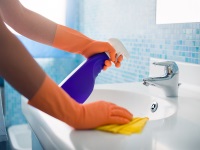
A sparklingly clean bathtub is not only a clean floor, but also a shiny polished sanitary ware and tiles on the walls. If you do not perform regular cleaning and cleaning of the room, then pretty soon even the most high-quality renovated and modern bathroom will look neglected and untidy. It's all the fault of the plaque, which over time appears on the walls and plumbing. In this article, we will tell you how you can fight the different types of plaque, because of what it appears, and what preventive measures will help you less often face this problem.
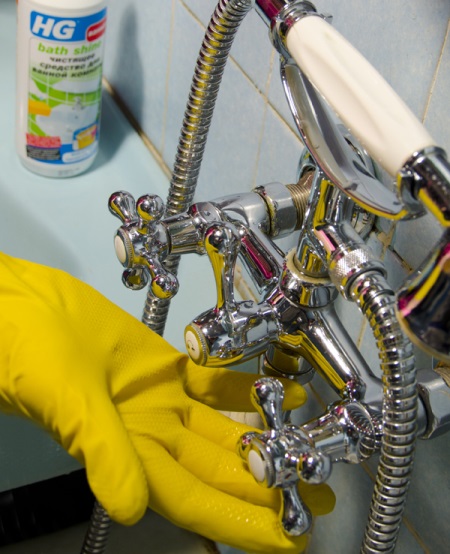
Causes
Let's take a closer look at the types of plaque and the causes of their appearance.
Plaque on plumbing fixtures
Since plumbing products actively interact with water, lime scale quickly forms on them. The water flowing through our sewer pipes is full of various minerals and lime.
Once the water hits a surface and evaporates, lime particles remain in its place. At first they are barely visible to the eye, but as the particles get bigger, the thickness of the plaque also increases.
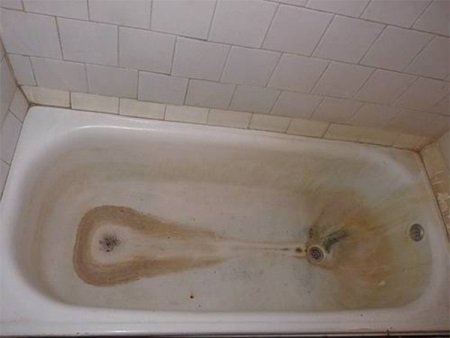
Lime scale, or lime stone, as it is also called, can appear on the toilet bowl, where the drain tank is leaking, as well as on the faucets, on the tub, on the pipes, etc. In addition to ruining the appearance of the product, it also makes it difficult to use.
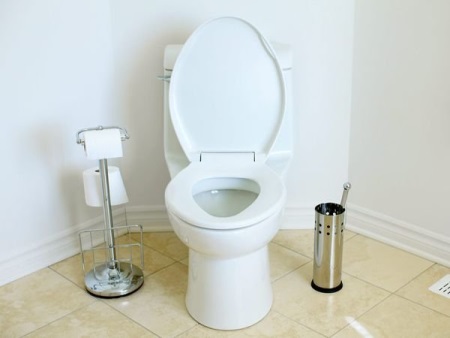
Plaque on the walls
When we talk about fouling on bathroom walls, we mean soap scum, which can form not only on tiles, but also on PVC panels, wall paneling and other surfaces. Hot water mixed with detergents in the form of water vapor settles on the walls and leaves a thin soapy layer on them. Over time, this layer turns into a soap scum, which is easy enough to remove at first, but over time it becomes increasingly difficult to clean.
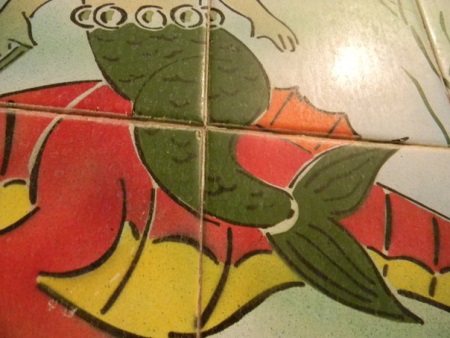
Fungal deposits
Increased humidity in the room provokes the active development of various fungi, which can be found most often in the joints between tiles, at the junction of the bathroom and the wall and in places that are difficult to clean.
Fungal plaque not only spoils the appearance of the room, but is also harmful to health, so it must be actively fought with antibacterial agents.

Faucet fouling
Since most homes now use nickel-plated faucets and taps, any streaks on them become instantly noticeable. If they are not cleaned regularly, both soap scum and lime scale can form on them.
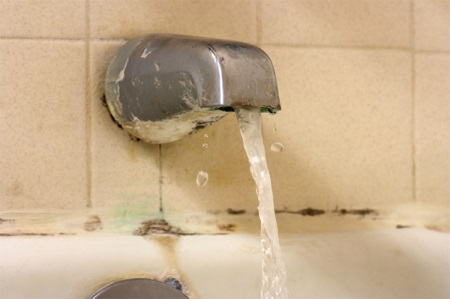
If a faucet is leaking somewhere, you may also encounter the problem of rust buildup. It's the hardest thing to clean. In addition, rust from the faucet can also stain other non-metallic surfaces, such as the bottom of the sink or bathtub. So it is important to get rid of the rust in a timely manner.
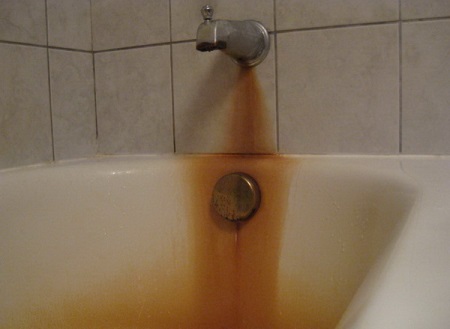
Removing Plaque
Each hostess has her own ways and methods of dealing with plaque in the bathroom. Someone prefers to use time-tested folk remedies. They do not contain chemicals hazardous to health and are less aggressive to the treated surface.
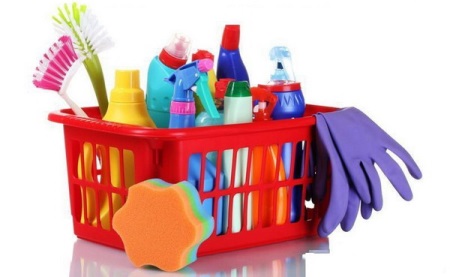
Someone gives preference to purchased cleaning agents. At the moment, there is quite serious competition in the market between manufacturers of various detergents for cleaning the bathroom and toilet. However, the principle of action of all these products is similar. Let's take a closer look at them.
Regardless of which cleaner you use, you'll need to stock up on rags, brushes, sponges and other implements. To clean plaque from hard-to-reach places and joints between tiles, you'll need an old toothbrush. You will also need rubber gloves to protect the skin of your hands.
Folk remedies
The first most popular way to remove plaque is to use various acids, which are available in almost every home.
- Acetic acid must have a concentration of at least 25%. It is necessary to prepare a solution by mixing it with water in a ratio of 1:20. It is best to dilute acetic acid with steep boiling water and then let the solution cool slightly. Such a solution can be used to remove plaque from earthenware, nickel-plated, enameled, glass and metallized surfaces. However, it is not suitable for use on acrylic bathtubs and plastic.
- Citric acid acts on the surface more delicately, so it can be used on any material. To make the acid work, it is necessary to apply it with a sponge to all surfaces covered with plaque for up to 3 hours. After that, it is rinsed off with normal water. Dilute citric acid in warm water until the crystals are completely dissolved. On average, one packet of citric acid, sold in any grocery store in the spice or baking product department, is used per glass of water.
- Sodium bicarbonate is used in many commercial cleaners where its concentration is very high. If you are looking for a milder version of the cleaner, you can make your own solution of water mixed with oxalic acid in the desired ratio (usually a 5% solution is used) and apply it to the scale-covered surface for a couple of hours. The acid will dissolve all the plaque and you only need to rinse it off with a stream of water.
- Some people also use hydrochloric acid to remove rust., But you must be very careful here. Under no circumstances should hydrochloric acid be allowed to come into contact with skin, as well as metal surfaces. It is, however, ideal for removing rust from enamelled surfaces. After using hydrochloric acid, the surface should be rinsed thoroughly with running water and washed with an ordinary detergent.
- A less dangerous way to remove rust is to use a mixture of ammonia and hydrogen peroxide. Mix ammonia and hydrogen peroxide in a 2:1 ratio in a separate jar, apply the mixture to a rag and wipe the dirt with it. After 10-15 minutes the mixture can be rinsed off.
- Some housewives use baking soda to remove plaque. However, you should be careful with such a tool, as the abrasive particles in it can scratch the surface. On how not to harm surfaces during cleaning, we will talk a little below.
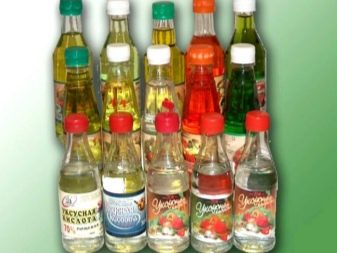
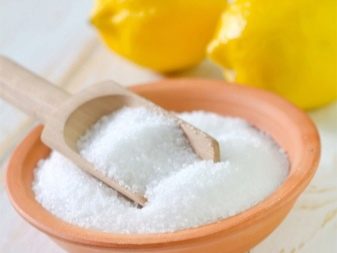
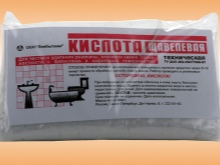
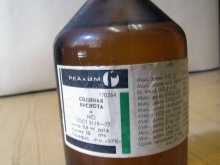
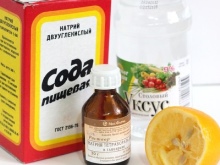
Chemicals
Cleaning with chemicals is much easier and usually faster. You will not need to measure out the right proportions and mix the solution yourself. All the necessary components in the cleaner are already used. All you have to do is apply the product to a sponge, dampened with water if necessary, wipe the surface with it and then rinse off the remaining plaque and detergent with plain water.
Chemical detergents are available in gel, powder and spray form. Read the information on the label carefully before you buy. It should not only tell you how to use the cleaner, but also what surfaces the cleaner is designed to clean. So, for example, abrasive powders and cleaners that contain acids are not suitable for acrylic baths.
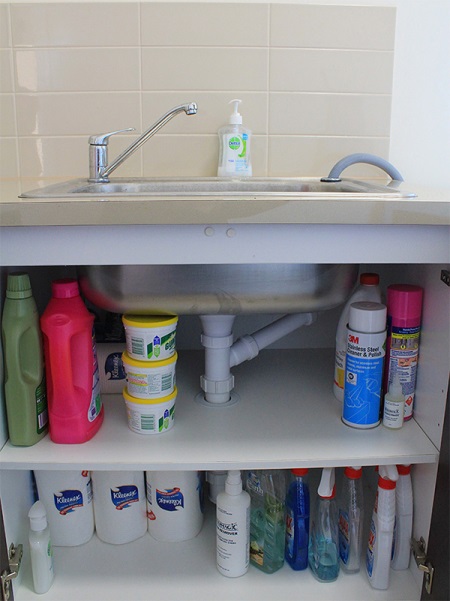
The more concentrated is the cleaner, the less time you need to keep it on the treated surface. This time frame can range from a few minutes to a few hours. If you are dealing with stale plaque, no product will help you cope with it at once, no matter how long you keep it on. The cleaning procedure will have to be repeated several times before you can completely get rid of the annoying dirt.
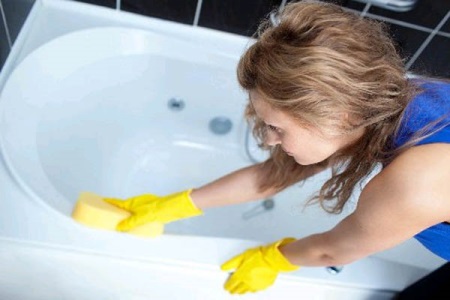
Application of cleaners depending on the surface
The type and material of the surface on which plaque has formed, to a large extent, affects how it should be cleaned:
- Cast iron products are the least fastidious. They can be cleaned with almost any agents, except strong acids like hydrochloric acid.
- Enameled and chrome surfaces should not be cleaned with powders and other abrasives, which can break the integrity of the coating. They can be cleaned with water-based solutions, gels and other liquid detergents. This also applies to items made of glass and porcelain. To get rid of plaque on enamel and return it to its original whiteness will also help bleach.
- Acrylic bathtubs are the most delicate to clean. It can only be cleaned from plaque with natural, natural acids or specialized acrylic surface cleaners. After treating the surface with an acidic solution, experts advise neutralizing its effects with any alkaline detergent.
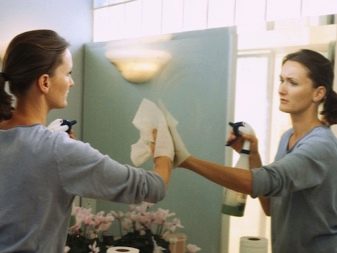
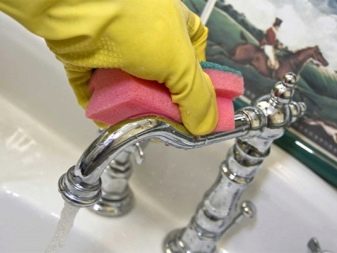
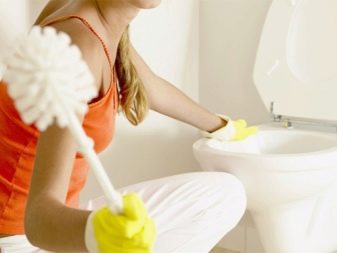
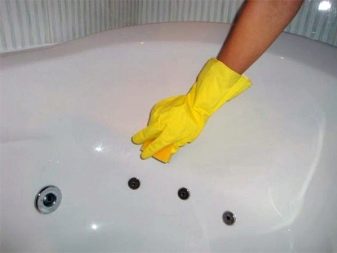
How not to spoil the surface
To avoid the situation, as in the proverb "We wanted the best, but it turned out as always," before you start cleaning the bathroom, carefully read the instructions on the packaging of the detergent. If you are using it for the first time, we advise you to try it on a small, inconspicuous area first, instead of applying it all over the tub.
We advise you not to use hard and metal brushes, which scratch the surface. Use porous sponges and soft rags. As a last resort, use brushes with soft bristles.
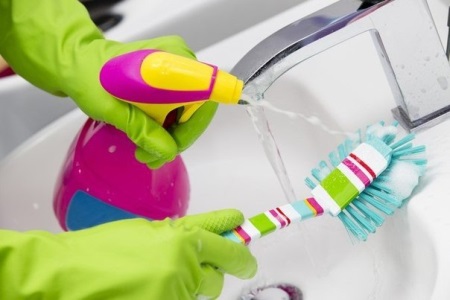
Preventive methods
In the fight against plaque, prevention is key. The more often you clean your bathroom properly, the less likely you are to ever have to deal with the problem of stubborn plaque. As a preventive measure against plaque, you don't have to resort to strong agents. A normal dishwashing liquid, powder, liquid soap - in a word, anything you can find in your house - will do. If you're too lazy to rinse the detergent after application, use a glass cleaner. Since most of them are made on the basis of alcohol, it will instantly evaporate from the surface, and all the dirt will remain on the rag.
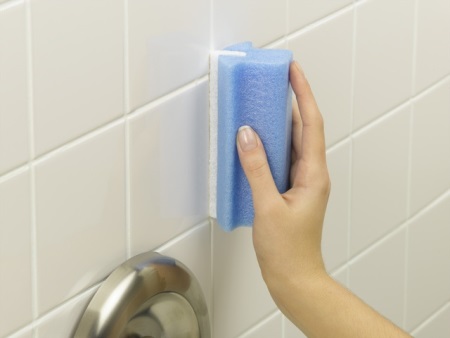
To fight fungus and mold, at least once a week use chlorine detergents or just a weak solution of bleach or whitewash in the bathroom. Remember, however, that you can't mix chlorine with different acids at the same time, because then the chlorine vapors will become poisonous.

Yellow stains on the bathtub
The water that comes out of our faucets often contains iron impurities. After it dries, yellow rust stains may remain in the sink and bathroom.Regular use of bleach can help prevent the appearance of such stains. If the rusty stains have already become too noticeable and the usual bleach can't handle them, the following remedy will help you:
- Prepare 2 tbsp each of baking soda and soda ash, 50 g of bleach and 50 g of vinegar.
- At first the mixture of soda ash and baking soda is applied to a wet surface and rubbed in a smooth circular motion for 10 minutes.
- Then a mixture of bleach and vinegar is applied on top and left on for another 30 minutes.
- The surface is rinsed with running water.
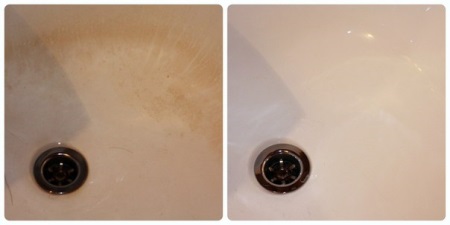





I have plaque in the bathroom can not wash out anything. I'll take your advice - try vinegar.